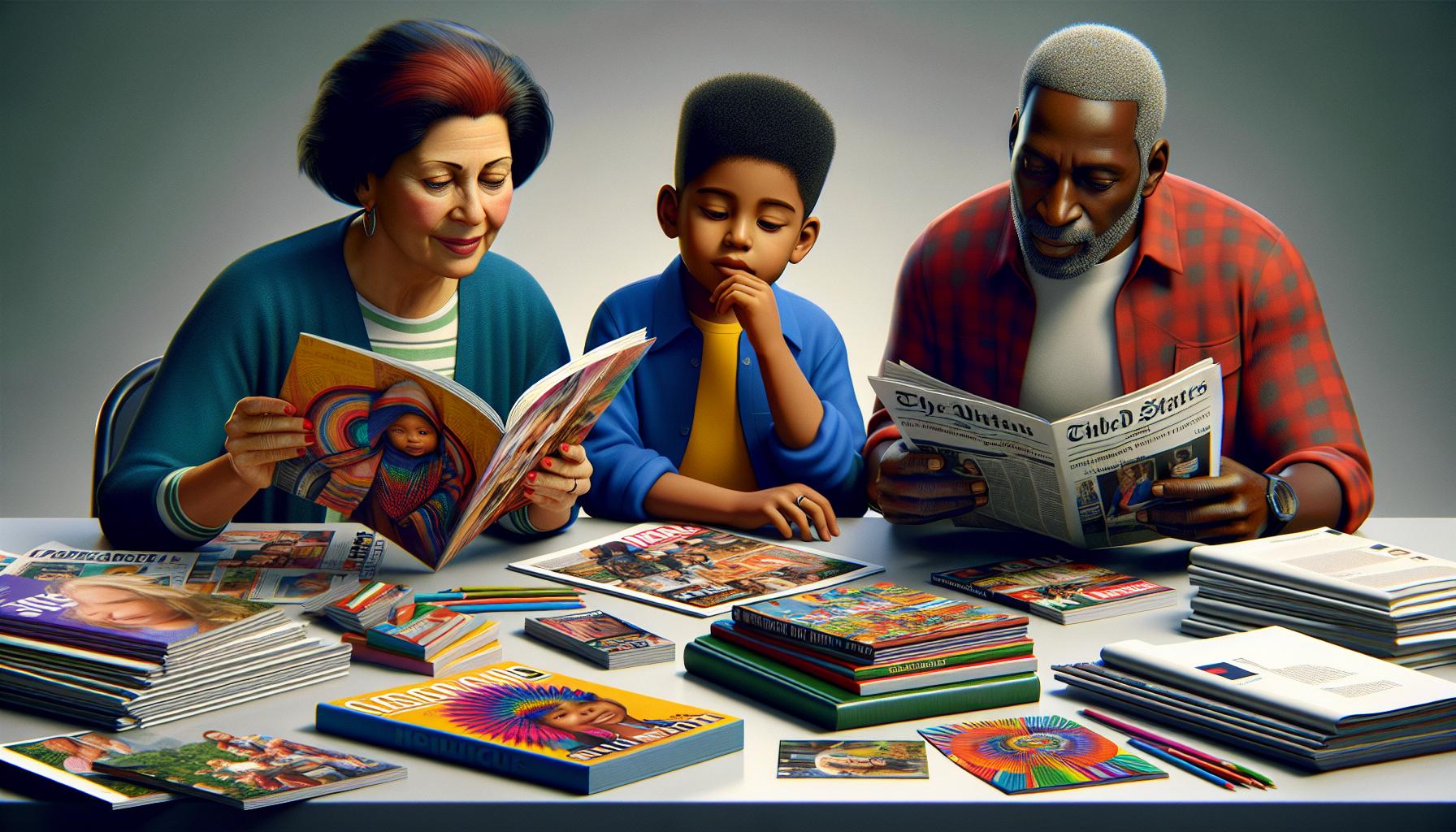Print media remains a powerful form of communication despite the digital revolution. From newspapers and magazines to brochures and catalogs these traditional formats continue to engage audiences through tangible physical connections that digital media can’t replicate.
Understanding different types of print media is essential for businesses marketers and communicators who want to create effective marketing campaigns. Each format serves unique purposes and reaches specific target audiences with varying levels of impact. Whether it’s the daily newspaper that provides in-depth coverage or glossy magazines that showcase stunning visuals print media offers distinctive advantages in today’s multimedia landscape.
Understanding Print Media and Its Evolution
Print media’s journey spans centuries of technological advancements from movable type printing to modern digital printing processes. The evolution encompasses changes in production methods, distribution channels, and content presentation formats.
Historical Development
The printing press transformed information dissemination in 1440, enabling mass production of printed materials. Key milestones in print media development include:
- Letterpress printing introduced standardized typefaces, creating consistent text layouts
- Offset lithography emerged in 1875, improving image reproduction quality
- Digital printing technology arrived in 1993, enabling variable data printing
- High-speed web presses increased production to 70,000 copies per hour
Traditional Print Forms
Print media established distinct categories to serve different communication needs:
- Newspapers deliver daily news through broadsheet or tabloid formats
- Magazines focus on specific topics with glossy paper and rich graphics
- Books preserve long-form content in hardcover or paperback bindings
- Brochures communicate targeted messages in tri-fold or bi-fold layouts
Modern Print Technologies
Digital integration enhanced print production capabilities:
| Technology | Feature | Impact |
|---|---|---|
| Variable Data Printing | Personalized content | 35% higher response rates |
| UV Printing | Instant curing | 40% faster production time |
| 3D Printing | Dimensional effects | 25% increased engagement |
| Smart Ink | Interactive elements | 45% improved recall rates |
Print Quality Standards
Modern print media adheres to specific quality benchmarks:
- Color accuracy maintains Delta E values below 2.0
- Resolution reaches 2400 dpi for sharp image reproduction
- Paper stock ranges from 80 gsm to 350 gsm
- Registration accuracy stays within 0.1mm tolerance
These advancements transformed print media from basic text reproduction to sophisticated communication tools incorporating interactive elements, personalization features, and enhanced visual capabilities.
Major Types of Print Media

Print media encompasses diverse formats that serve distinct communication purposes across different audience segments. Each type offers unique advantages in reaching specific reader demographics through varied content presentation styles.
Newspapers and Periodicals
Daily newspapers deliver current events coverage through structured sections including news, sports, business, entertainment and classified advertisements. Weekly periodicals focus on local community news, featuring in-depth reporting on municipal issues, school events and neighborhood developments. Leading newspapers maintain circulation numbers between 100,000 to 2 million copies per day, with special editions reaching up to 4 million readers.
Magazines and Journals
Magazines target niche audiences through specialized content ranging from fashion, lifestyle, technology to professional industries. Academic journals publish peer-reviewed research papers, scholarly articles and scientific studies within specific fields. Monthly magazines average 50-150 pages per issue while academic journals typically contain 8-12 research articles across 60-80 pages.
Books and Textbooks
Books span multiple categories including fiction novels, non-fiction works, reference materials and educational publications. Textbooks feature structured learning content with chapters, illustrations, practice exercises and assessment materials. Standard books range from 200-400 pages while academic textbooks often exceed 500 pages with supplementary digital resources.
Brochures and Pamphlets
Marketing brochures utilize concise copy combined with graphics to promote products, services or events. Informational pamphlets provide focused content on specific topics through condensed formats. Standard tri-fold brochures contain 6 panels while pamphlets range from 4-16 pages incorporating images, charts and call-to-action elements.
Modern Commercial Print Media
Commercial print media encompasses essential business communication tools that establish brand identity and facilitate marketing objectives. These printed materials serve as tangible touchpoints between organizations and their audiences.
Business Cards and Stationery
Business cards remain a cornerstone of professional networking with 27 billion cards printed annually in the United States. Standard business stationery includes:
- Letterheads featuring company logos color-matched to brand specifications
- Professional envelopes in multiple sizes (A4, A5 letter)
- Appointment cards with spot UV coating for durability
- Notepads customized with corporate branding elements
- Email signature cards with QR codes linking to digital profiles
Marketing Collateral
Marketing collateral provides detailed product information through diverse printed formats:
- Tri-fold brochures with 100# gloss paper stock
- Product catalogs spanning 16-64 pages
- Direct mail postcards in 4×6 5×7 6×9 sizes
- Sales sheets featuring technical specifications
- Event banners printed on 13oz scrim vinyl
- Trade show displays with retractable mechanisms
- Custom retail boxes with spot UV finishes
- Product labels utilizing pressure-sensitive adhesives
- Shopping bags featuring reinforced handles
- Hang tags printed on 14pt card stock
- Tissue paper with repeating logo patterns
- Gift boxes constructed from rigid board materials
| Print Material Type | Average Annual Usage | Typical Print Run |
|---|---|---|
| Business Cards | 27 billion units | 500-1000 pieces |
| Marketing Brochures | 2.5 billion units | 2500-5000 pieces |
| Product Labels | 30 billion units | 1000+ pieces |
The Role of Print Media in Marketing
Print media maintains a pivotal position in marketing strategies by delivering tangible brand experiences through physical marketing materials. Its proven effectiveness in building brand awareness stems from the integration of visual design elements with tactile engagement.
Print Media’s Impact on Brand Building
Print media strengthens brand identity through consistent visual elements across various marketing materials. Research by the Print Industries Market Information and Research Organization reveals that 56% of consumers trust print marketing more than other advertising methods. Marketing materials like business cards catalogs letterheads project brand professionalism through:
- Design consistency in logos color schemes fonts
- Quality paper stocks that reflect brand positioning
- Tactile finishes including embossing foiling spot UV
- Custom die-cuts shapes creating memorable impressions
Advantages of Print Advertising
Print advertising delivers measurable marketing benefits through targeted distribution channels. A study by MarketingSherpa shows that print advertisements generate an average response rate of 4.4% compared to 0.12% for digital ads. Key advantages include:
- Extended content lifespan in magazines newspapers
- High engagement rates with 82% readthrough completion
- Targeted geographic distribution to specific demographics
- Proven ROI tracking through dedicated response channels
- Enhanced memory retention with 70% better recall rates
| Print Advertising Metrics | Performance Rate |
|---|---|
| Average Response Rate | 4.4% |
| Content Readthrough | 82% |
| Brand Recall | 70% |
| Trust Factor | 56% |
- Sensory engagement with paper textures finishes
- Integration with digital campaigns via QR codes
- Local market penetration through newspapers magazines
- Premium positioning through high-quality materials
Digital Integration With Print Media
QR Codes and AR Technology
QR codes bridge print media with digital platforms through scannable patterns that link to websites, videos or interactive content. Leading retailers integrate QR codes on product packaging, with 45% of shoppers scanning codes to access additional product information. Augmented reality (AR) markers embedded in print materials overlay digital content when viewed through mobile devices, creating immersive brand experiences.
Cross-Media Campaigns
Print media synchronizes with digital channels through integrated marketing campaigns that optimize reach across platforms. Cross-media initiatives generate 39% higher brand awareness compared to single-channel approaches according to InfoTrends research.
| Campaign Element | Average Response Rate |
|---|---|
| Print Only | 5.1% |
| Digital Only | 2.3% |
| Print + Digital | 8.7% |
Smart Print Technologies
Smart print innovations enhance traditional media with digital capabilities:
- Near Field Communication (NFC) chips embedded in print materials enable contactless interactions
- Conductive inks create touch-sensitive printed surfaces that trigger digital responses
- Variable data printing personalizes content based on customer data
- Temperature-sensitive inks display dynamic content changes
Digital Asset Management
Print media integrates with digital workflows through automated systems:
- Cloud-based design libraries store brand assets for consistent cross-channel usage
- Web-to-print portals streamline customized print ordering
- Digital proofing tools enable remote collaboration
- Print-on-demand platforms reduce inventory costs through just-in-time production
- Unique QR codes track engagement rates per printed piece
- Custom landing pages monitor response from specific print campaigns
- Call tracking numbers measure conversion from print advertisements
- Geographic response mapping identifies high-performing distribution areas
Future Trends in Print Media
Digital Integration Technologies
Print media embraces cutting-edge technologies to create interactive experiences. Electronic paper displays integrate traditional print with digital screens, enabling dynamic content updates. Intelligent inks respond to environmental changes, creating color-shifting effects based on temperature or light exposure. Smart labels incorporate RFID technology, enabling real-time tracking and authentication of printed materials.
Sustainability Innovations
Environmental consciousness drives sustainable print media development. Biodegradable inks derived from algae and vegetable sources reduce environmental impact. Recycled paper alternatives, including hemp and bamboo-based materials, offer eco-friendly printing options. Zero-waste printing processes minimize resource consumption through automated ink recovery systems.
| Sustainable Print Innovation | Environmental Impact Reduction |
|---|---|
| Algae-based Inks | 67% lower carbon footprint |
| Hemp Paper | 50% less water consumption |
| Automated Ink Recovery | 40% waste reduction |
Personalization Technologies
Variable data printing enables mass customization of print materials. AI-driven design systems analyze consumer data to create targeted content layouts. Cross-media personalization links print materials to individual digital profiles through unique identifiers.
Production Automation
Robotics streamline print production processes:
- Automated bindery systems process 15,000 books per hour
- Computer-vision quality control identifies defects with 99.9% accuracy
- Smart workflow systems optimize production schedules in real-time
- Predictive maintenance reduces equipment downtime by 35%
Hybrid Print Solutions
Print media evolves through hybrid technologies:
- Programmable paper incorporates electronic components
- Photochromic inks create dynamic color-changing effects
- Embedded sensors monitor environmental conditions
- Conductive printing enables touch-sensitive surfaces
- Micro-editions target specialized market segments
- On-demand printing reduces inventory costs
- Mobile print stations serve temporary locations
- Subscription-based print services offer flexible delivery options
Conclusion
Print media remains a powerful force in today’s digital age continuing to evolve and adapt through technological advancements. From traditional formats to modern innovations print media offers unique advantages that digital alternatives can’t replicate. Smart technologies sustainable practices and enhanced personalization capabilities are reshaping the industry’s future.
The combination of print and digital elements creates dynamic marketing opportunities that engage audiences effectively. As businesses seek to stand out in a crowded marketplace print media’s tangible nature and trusted reputation make it an invaluable tool for communication and brand building.
Through continuous innovation and adaptation print media isn’t just surviving – it’s thriving as an essential component of modern marketing and communication strategies.
